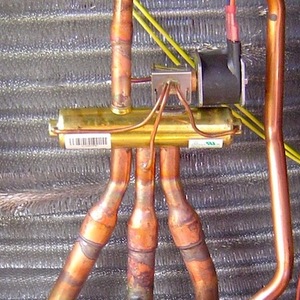
Selecting the right-sized heat pump is a balancing act. If the model chosen is undersized, with too little heating or cooling capacity, it won’t be able to keep up in extreme weather. Either the home’s temperature will drop, or the system will fall back on expensive supplemental heat.
Oversizing a heat pump—choosing a model with more capacity than needed—can also cause problems. An oversized heat pump will cost more upfront, and its larger power draw and airflow requirements may trigger additional costs. While the oversized system will meet the home’s full loads in extreme weather, it will perform poorly under milder, more typical conditions. It will cycle on and off frequently, producing excessive noise, temperature swings, and unnecessary wear and tear. In cooling mode, an oversized system will not run long enough to provide good dehumidification; instead, it will drop the temperature rapidly and then shut off, leaving the air feeling cool but clammy.
With data on a home’s dimensions, surface characteristics, air leakage, and internal gains, we can calculate heating and cooling design loads using the procedures spelled out in Air Conditioning Contractors of America Manual J. These calculations tell us how many Btu (British thermal units) of heating and cooling we need to keep the home comfortable in very hot and cold weather. In an earlier article, I walked readers through the Manual J process, stressing the importance of an aggressive calculation. An aggressive calculation is one that uses the best available data and includes no extra padding. It’s a prerequisite for getting equipment selection right.
Next comes the hard part: choosing the system that best matches the home’s needs. Heat pump capacity varies with outdoor temperature. Catalogs and submittal sheets list outputs at standard temperatures—typically 47°F, 17°F, and 5°F. But…
Weekly Newsletter
Get building science and energy efficiency advice, plus special offers, in your inbox.

This article is only available to GBA Prime Members
Sign up for a free trial and get instant access to this article as well as GBA’s complete library of premium articles and construction details.
Start Free TrialAlready a member? Log in















9 Comments
This entire analysis looks really cool, but it's described as if the Manual J load estimate is precise and not just a very rough guess. Large uncertainties in air leakage, duct losses, thermal defects, and customer temperature and control preferences make all of these detailed calculations into rough estimates as well. It would be great if someone conducted field research on how well this all works in practice.
This is a valid point. A lot of the uncertainty in Manual J can be eliminated with a good building assessment (including a blower door test), followed by an analysis of fuel use data. But some uncertainty is always going to remain. One of the things you can do with this tool is a sensitivity analysis. How would my sizing recommendations change if the actual load is 10% (or 20%) higher or lower than my calculations?
There's also a huge need for more tracking of actual energy use for air source heat pumps. The studies that I've read (like Williamson and Aldrich 2015; https://www.nrel.gov/docs/fy15osti/63913.pdf) have shown pretty wide variation in real-world efficiency, with system design and user behavior both contributing factors. It would be great to have the data to compare measured performance vs. the NEEP predictions.
Jon,
Great blog as always!
Thanks. It's too bad the tool doesn't include Canada.
Does anyone have the URL for the actual NEEP tool? The article links to neep.org, not specifically the tool.
It's here: https://ashp.neep.org/
You may need to scroll down a bit to see the Advanced Search - Sizing for Heating button. Click that.
Thanks!
Very cool chart, I like the Percent Annual Heating Load Served. Line set lengths/fittings would change the output.
Jon,
This was fantastic! Three times reading through it, an hour or so comparing different advanced searches, and a few cups of coffee have helped me (sort of) understand what the trade-offs are of different options. Can you (or anyone else here) help me understand why it is typically only the wall mount non-ducted indoor units that are rated to work down to -13F/-15F? When the same outdoor unit is paired with a ducted indoor unit, the coldest rated temperature often (always?) increases. Can ducted indoor units still function at lower temperatures? Why?
Thanks!
Log in or become a member to post a comment.
Sign up Log in